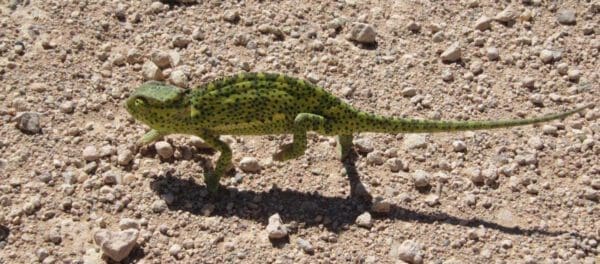Dear Flamingo Enthusiasts,
Welcome to the October edition of "Flamingo Fandango", your gateway to the mesmerizing world of pink flamingos in the breathtaking landscapes of Namibia. As we delve into the wonders of these elegant creatures and their unique habitats, you'll find yourself enchanted by the allure of the pink flocks that grace this remarkable African country.
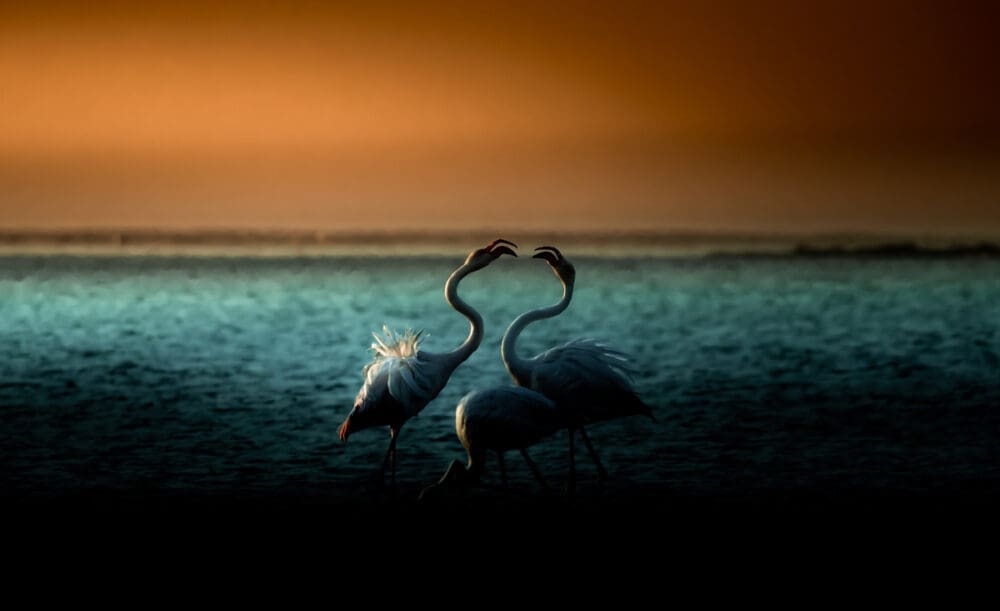
Namibia as a Flamingo Paradise?
Namibia, known for its striking deserts, rugged coastlines, and diverse wildlife, is also home to some of the world's most captivating pink flamingos. Among its many treasures, the saline lagoons and coastal wetlands have become a sanctuary for these elegant birds, attracting flamingo enthusiasts and wildlife photographers from around the globe.
In Namibia, you'll find two prominent flamingo species: the Greater Flamingo (Phoenicopterus roseus) and the Lesser Flamingo (Phoeniconaias minor). These feathered wonders bring life and color to the country's arid landscapes, their hues a stark contrast to the earthy tones of the surrounding terrain.
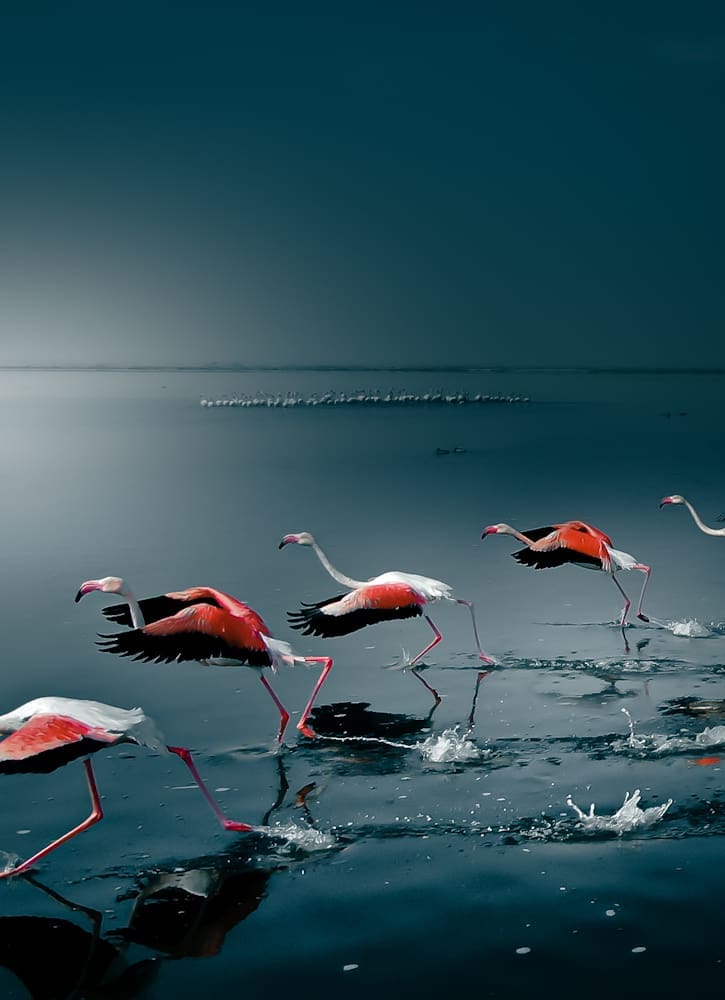


Which kind of Flamingos can be found in Namibia?
Greater Flamingo
The Greater Flamingo is known for its majestic stature and vibrant pink plumage. These tall birds, standing up to 5 feet in height, are a common sight in Namibia's lagoons. Their long necks, elegant legs, and distinctive downward-curving bills make them a sight to behold. Greater Flamingos feed on algae and crustaceans, which contribute to their rosy hue.
Lesser Flamingo
In contrast, the Lesser Flamingo is a smaller species, measuring around 3 feet in height. They possess a stunning deep pink coloration that intensifies as they mature. Namibia is one of the few places in the world where you can witness the mesmerizing spectacle of tens of thousands of Lesser Flamingos congregating to feed and breed.
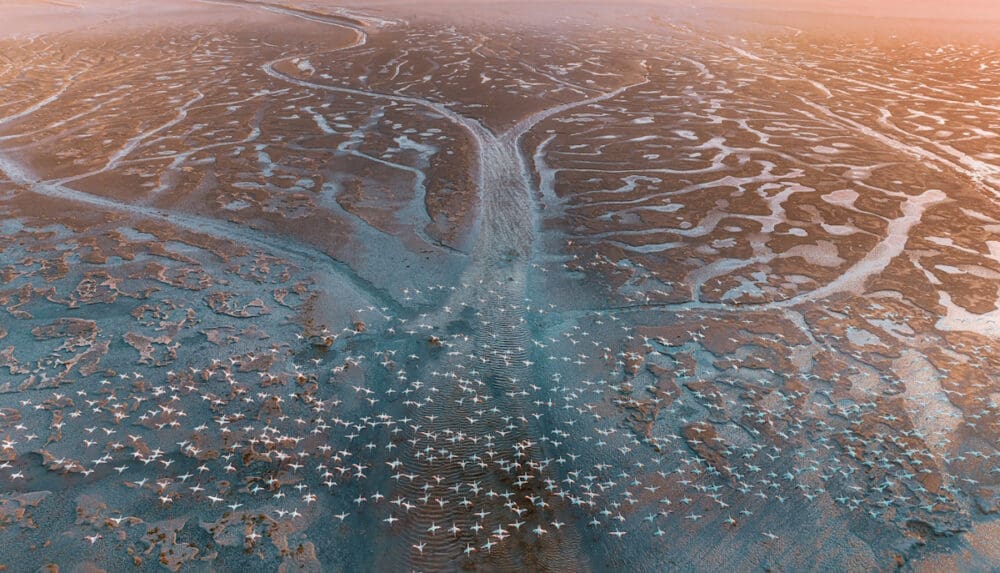
Where to find Flamingos in Namibia?
Namibia's pink flamingos are famous for their unique breeding and feeding habits. The country's extensive network of salt pans, lagoons, and wetlands provides the perfect conditions for these magnificent birds to thrive.
Walvis Bay
The coastal town of Walvis Bay, located on the Atlantic Ocean, is a hub for
flamingo enthusiasts. The lagoons here are a popular destination for both Greater and
Lesser Flamingos. Witnessing the vast pink flocks gracefully wading through the shallow
waters is a sight that leaves an indelible mark.
Sandwich Harbour
Sandwich Harbour, situated between towering sand dunes and the sea,
is a haven for birdwatchers. Here, flamingos can open be seen in the shallow, brackish
waters, creating a surreal scene where desert meets ocean.
Etosha Pan
Moving inland, the Etosha Pan is another exceptional location where flamingos
can be spotted. During the wet season, this ancient salt pan fills with water, creating a
temporary paradise for these birds. The contrast between the stark white salt and the vivid
pink flamingos against the backdrop of the African sky is a photographer's dream.
Nyae Nyae Pans
The Nyae Nyae pans are a hidden treasure in the middle of the Bushmanland - todays Tsumkwe district. The Nyae-Nyae Pan itself consists of a large deflation basin comprising both grassland and open wetlands. Dependent on the season it might be hard to get there. Nevertheless the amazing feeling of finding Flamingos "in the middle of nowhere" is definitely worth the way.

Making the Flamingos stay in Namibia
Conservation Efforts
Preserving the habitat and well-being of these remarkable birds is of paramount importance in Namibia. The country has taken significant strides in conservation efforts, recognizing the ecological importance of flamingos to the ecosystem.
Educational Initiatives
Local organizations and schools in Namibia actively engage in educational programs to raise awareness about flamingo conservation. These initiatives teach communities about the vital role flamingos play in maintaining the health of their environments.
Protected Areas
Several protected areas in Namibia, such as the Walvis Bay Wetland Reserve, ensure that flamingo habitats are safeguarded. Regulations are in place to restrict human interference and habitat destruction.
Research and Monitoring
Ongoing research and monitoring programs help scientists gain insights into flamingo behavior, population dynamics, and environmental factors affecting their well-being. This information is invaluable for making informed conservation decisions.
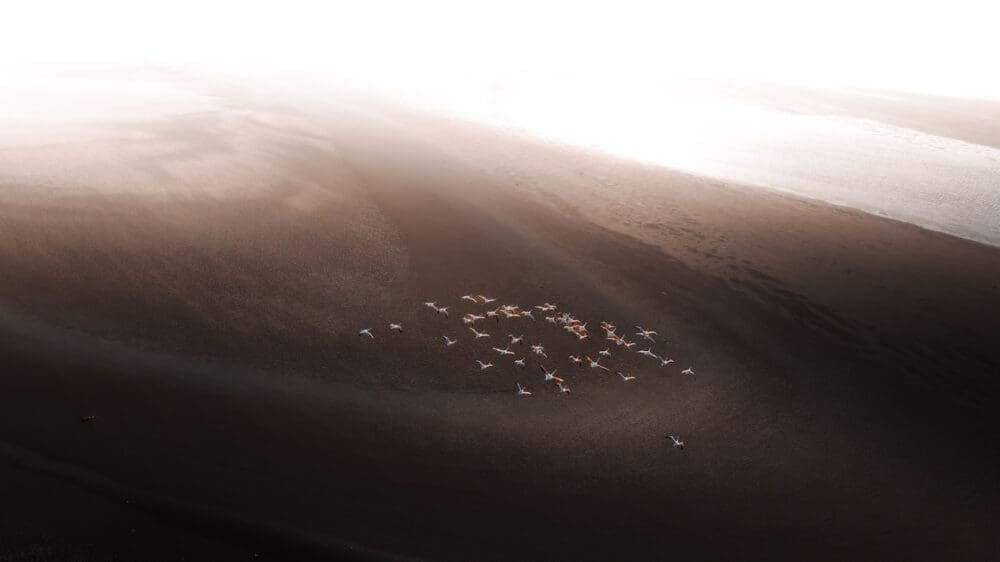
How to experience the Flamingos?
For those who wish to witness the enchanting pink flamingos of Namibia firsthand, there are numerous ways to make your experience memorable.
Guided Tours
Joining a guided tour is a fantastic way to explore the flamingo habitats in Namibia. Knowledgeable guides can lead you to the best viewing spots and share their expertise on these captivating birds.
Bird Watching
Namibia offers exceptional bird watching opportunities beyond flamingos. Keep an eye out for other bird species like pelicans, herons, and raptors, as well as Namibia's unique desert-adapted wildlife.
Photography
Whether you're a professional photographer or simply capturing memories on your smartphone, Namibia's flamingos provide endless opportunities for stunning shots. The interplay of light, water, and these majestic birds creates a photographer's paradise.
Conclusion
Namibia's pink flamingos are a true marvel of nature, thriving in a harsh and strikingly beautiful environment. Their presence in the country's saline lagoons and wetlands is a testament to the resilience and adaptability of wildlife.
We hope this newsletter has piqued your interest in exploring the world of pink flamingos in Namibia. Whether you're a seasoned birdwatcher, a wildlife photographer, or simply an admirer of the natural world, a visit to Namibia's flamingo habitats promises an unforgettable experience.
Thank you for joining us on this journey through the pink flamingos of Namibia. As stewards of our planet, let's continue to celebrate and protect these incredible creatures and the stunning landscapes they call home.
We send our special thanks to Solly Levi who provided the great flamingo pictures.
Until next time, happy birdwatching!
P.S. Share your flamingo adventures with us on social media.
Missed a Newsletter? - Check here
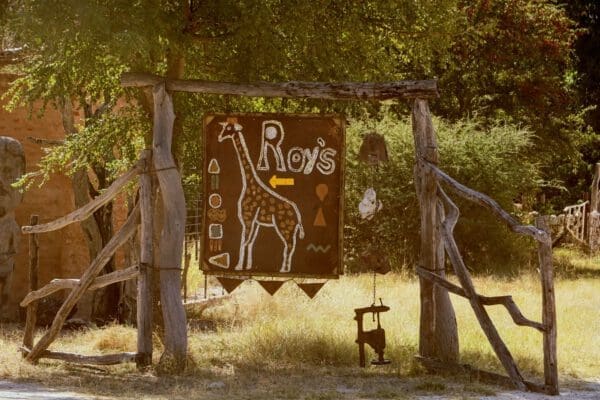
Hidden gems of Namibia Part 3 – Roy’s Rest Camp
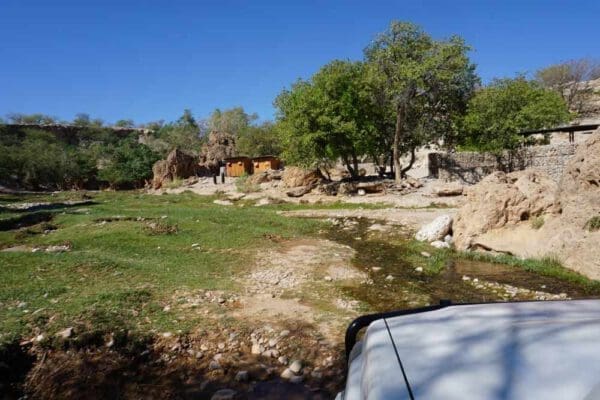
Hidden Gems of Namibia Part 2 – Magic and refreshment at Ongongo Waterfall

Hidden Gems of Namibia Part 1 – Glamping in Goanikontes Oasis
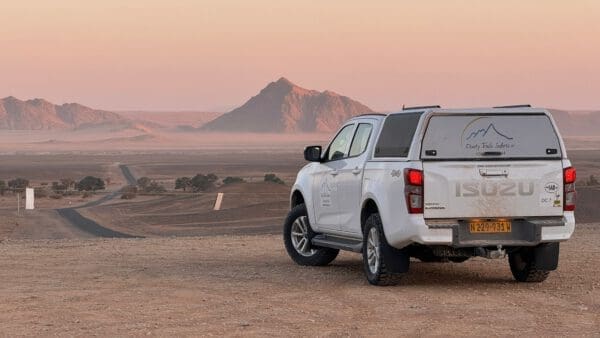
Personalized Trips you won't forget

The desert - cruel life or pure fascination
